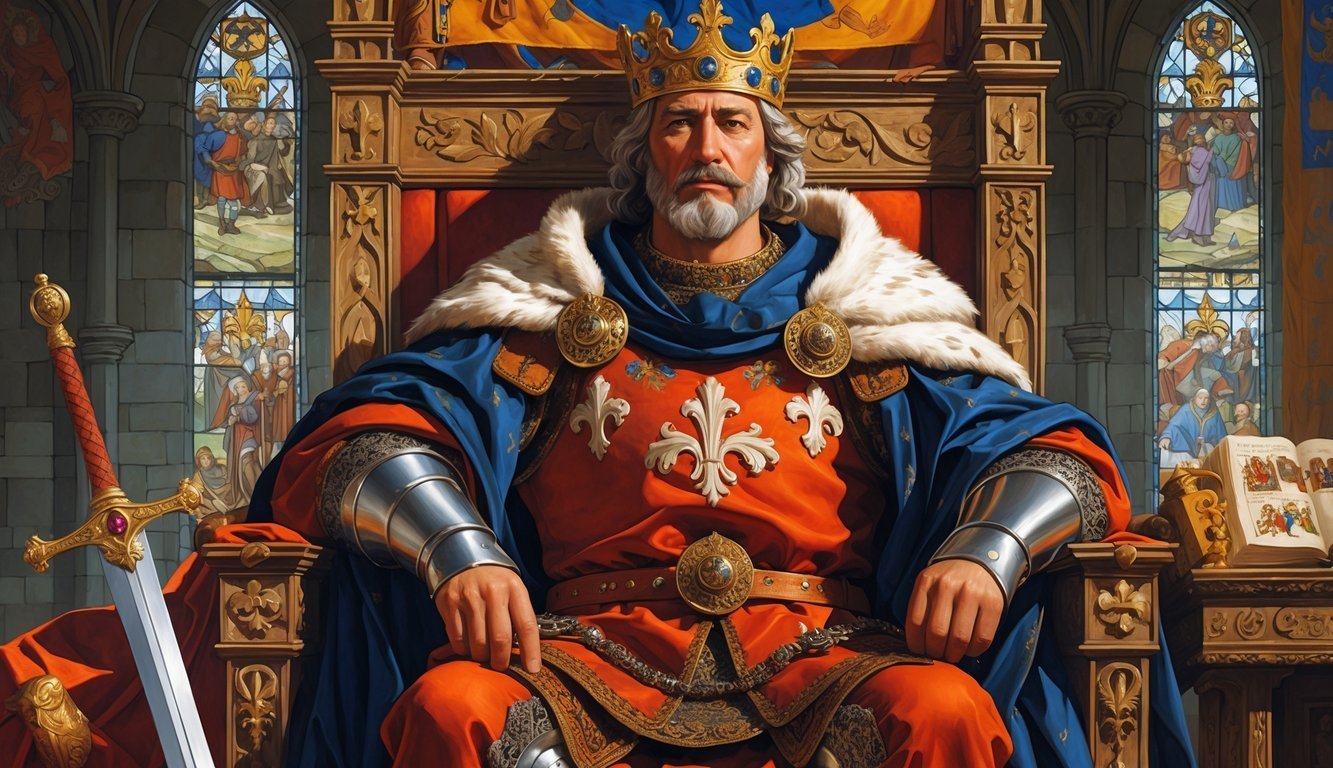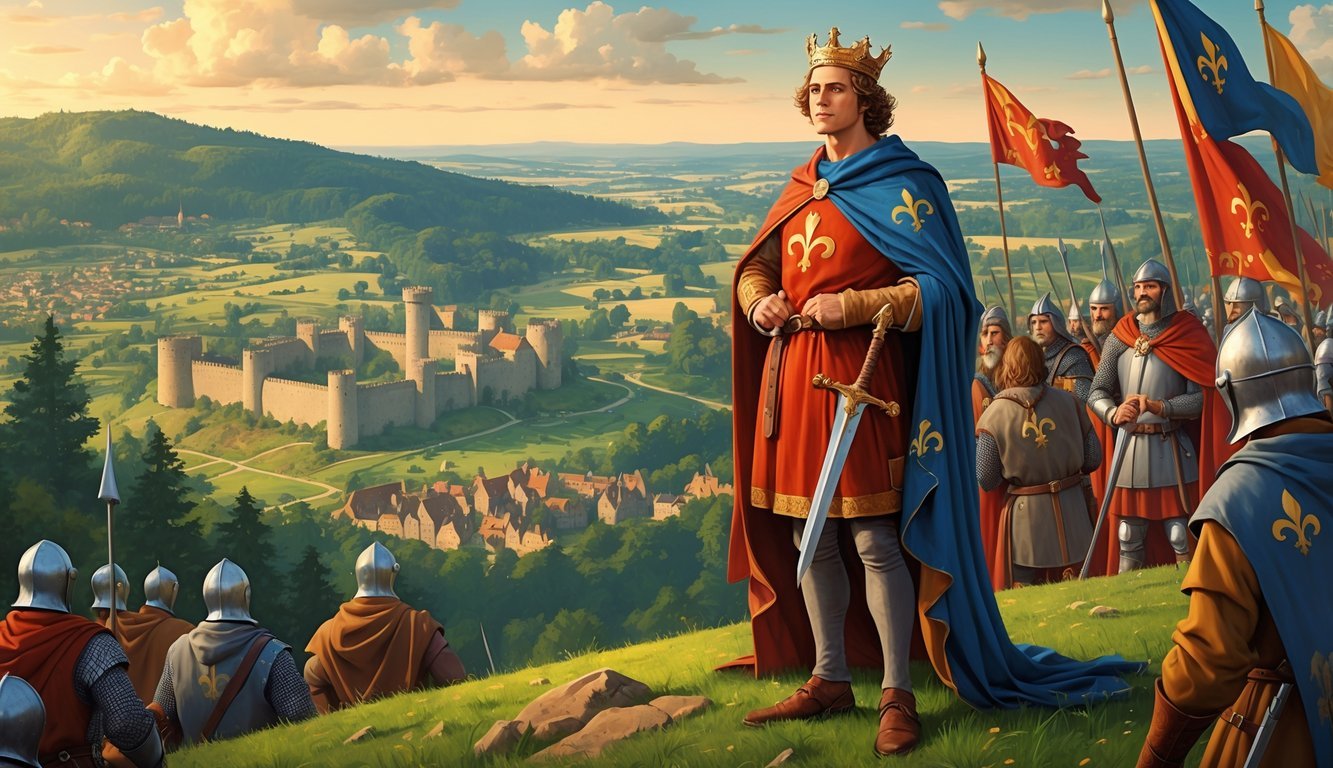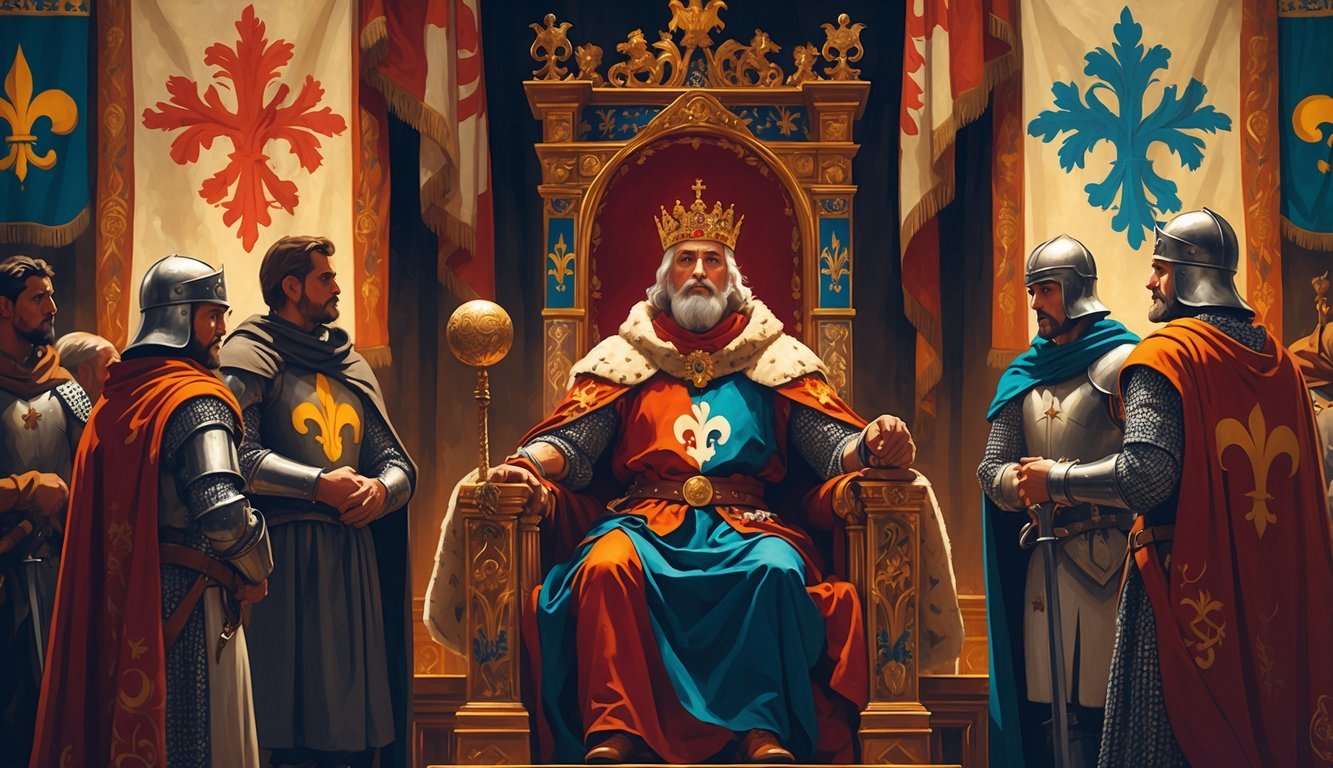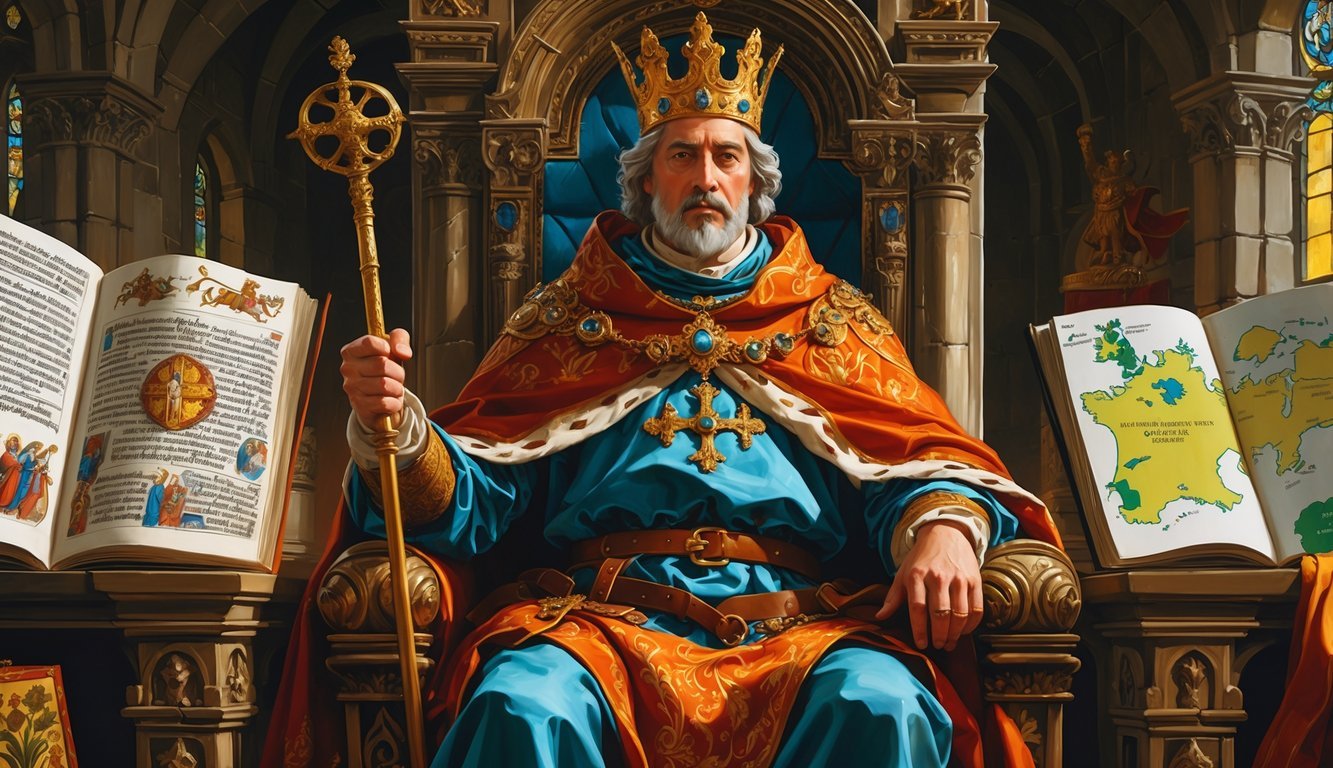Physical Address
304 North Cardinal St.
Dorchester Center, MA 02124
Physical Address
304 North Cardinal St.
Dorchester Center, MA 02124
Charlemagne, born around 742 A.D., unified much of Western Europe, became Emperor in 800, and significantly influenced medieval politics, culture, and education.

Charlemagne ruled much of Europe over 1,200 years ago and left a huge mark on history.
People remember him for uniting different kingdoms and shaping the early medieval world.
He became King of the Franks, King of the Lombards, and later, Emperor of a vast empire that helped lay the groundwork for modern Europe.
Charlemagne was born around 742 A.D. in what we now call Belgium.
He grew up strong and clever, and his reign lasted decades.
He tried to spread Christianity, worked on education, and built up his empire.
His actions changed Europe’s history, and people still talk about him today.
Are you tired of spinning your wheels and getting nowhere? Simply put, you’re out of sync: you’re out of alignment with your astral configuration.
But: there’s a kind of map that can help you reclaim your alignment. Think of it as your own personal blueprint to success and happiness: a blueprint that will help you live your most amazing life.
Get started here.
If you’re curious about Charlemagne, you’re in the right place.
We’ll walk through his life, big achievements, and the ways he still affects the world.

Let’s look at Charlemagne’s family, his early days, and how he became king.
These parts of his life really influenced his path and his rise in the Frankish kingdom.
Charlemagne was born around 742 to Pepin the Short and Bertrada of Laon.
Pepin started as mayor of the palace before becoming king of the Franks, kicking off the Carolingian dynasty.
This family replaced the Merovingian dynasty, which had lost its grip on power.
The Merovingian kings barely held any real power, while Pepin managed to take control and became king in 751.
Charlemagne’s grandfather, Charles Martel, also played a big part in history.
He stopped the Muslim advance into Europe and made the Frankish kingdom stronger, especially in Austrasia.
Charlemagne grew up in the Frankish court as a young prince.
His mother, Bertrada, took part in his early life.
Education mattered to Charlemagne, and he probably learned to read and write, which was rare for nobles back then.
His training covered leadership, military skills, and law.
We don’t have many records, but priests and scholars in the royal household likely taught him.
This education helped him become a clever and capable ruler.
When Pepin the Short died in 768, he split his kingdom between Charlemagne and Carloman I, his brother.
Sharing power led to tension, but Charlemagne soon took the lead.
Carloman died in 771, so Charlemagne took over his lands and became the only king.
This was a big step toward uniting the Frankish kingdom.
Charlemagne’s alliance with the Pope boosted his political power and set him up to become Emperor later on.

Charlemagne ruled a huge territory and changed medieval Europe through wars, politics, and cultural projects.
He worked closely with the Church, which helped him gain more power and influence.
His military skill, imperial crown, and love for learning left a mark that lasted long after he was gone.
Charlemagne grew his empire through many campaigns.
His wars against the Saxons dragged on for over 30 years, and he forced them to convert to Christianity.
The massacre of Verden stands out as a brutal moment—thousands of Saxons died for resisting.
He also fought the Lombards in northern Italy and defeated their king, Desiderius.
Afterward, he took the title King of the Lombards.
He led forces into Spain to slow the Moors and set up the Spanish March as a border.
In the east, Charlemagne’s armies beat the Avars and brought Bavarian and Slavic tribes under his control.
He kept Francia safe and expanded it, ruling much of Western Europe.
In 800 AD, Pope Leo III crowned Charlemagne Emperor of the Romans in Rome.
This revived the idea of a western Roman Empire, which people thought had ended long before.
The coronation tied his rule to Christian authority.
Charlemagne worked closely with popes like Leo III and Stephen II, protecting the Papal States and spreading Christianity.
This moment kicked off what became the Holy Roman Empire and made Charlemagne both king and defender of the Church.
Charlemagne cared about learning and set up schools across his empire, sparking the Carolingian Renaissance.
This period revived art, education, and Christian teachings based on Roman and Christian roots.
He brought scholars to his court in Aachen, including the monk Einhard, who later wrote his biography.
By promoting Latin and standardizing writing, he helped preserve ancient texts.
Charlemagne improved government by dividing his empire into regions run by counts and officials who answered to him.
This system helped him manage a vast area and spread Christian religion and laws.
Charlemagne died in 814, and his son Louis the Pious took over.
The unity Charlemagne built didn’t last long after his death, and the empire split up.
Still, Charlemagne’s legacy stuck around.
People often call him the Father of Europe because he shaped medieval politics, law, and culture.
Even centuries later, rulers pointed to him to claim papal approval and authority.
His empire set the stage for modern European countries and the idea of a Christian kingdom led by an emperor.

Here are some quick answers about why Charlemagne matters, what he achieved, and how he influenced education and culture.
You’ll also get a glimpse of his family, his effect on Europe’s map, and a few surprising facts.
Charlemagne stands out because he united much of Western Europe during the early Middle Ages.
He brought order after chaos and laid the groundwork for modern Europe.
He became king of the Franks in 768 and later king of the Lombards.
In 800, he was crowned emperor, uniting many lands under his rule.
Charlemagne promoted learning by supporting schools and scholars.
He encouraged people to copy important books, which helped preserve knowledge.
His father was Pepin the Short, the first king of the Franks from their family line.
Charlemagne had several children, and after he died, they ruled different parts of his empire.
He expanded his empire to cover much of what’s now France, Germany, and Italy.
His rule shaped the political boundaries that influenced Europe for centuries.
Charlemagne actually had a brother who ruled alongside him as co-king, but his brother died not long after they began.
People sometimes call Charlemagne the “Father of Europe” since he played a huge part in bringing the continent together during a pretty wild period.